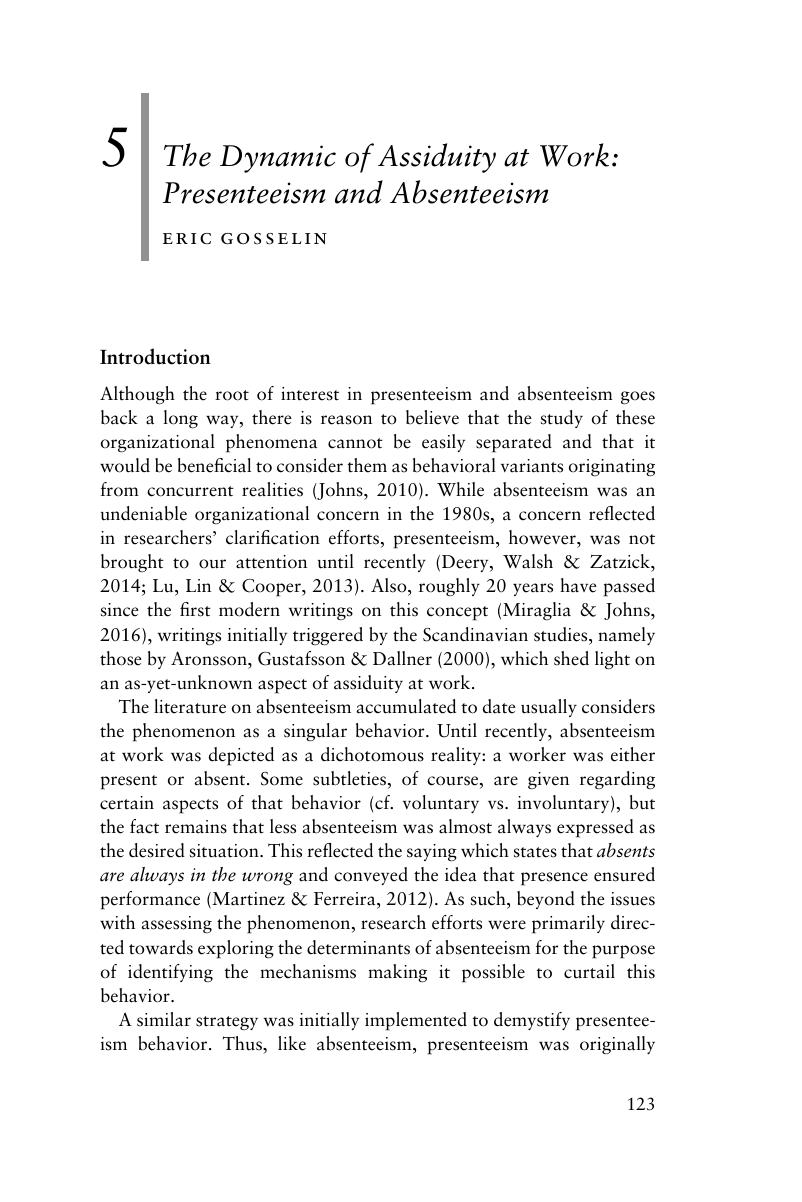Book contents
- Presenteeism at Work
- Cambridge Companions to Management
- Presenteeism at Work
- Copyright page
- Contents
- Contributors
- Foreword
- Introduction
- Part I Situating Presenteeism on the Global Stage
- Part II Understanding the Behavior of Presenteeism
- 4 Motivation and Presenteeism: The Whys and Whats
- 5 The Dynamic of Assiduity at Work: Presenteeism and Absenteeism
- 6 Sickness Presenteeism and Attendance-Pressure Factors
- 7 Presenteeism in Economic Research*
- Part III Understanding the Consequences of Presenteeism
- Part IV Understanding Presenteeism in a Cross-Cultural Context
- Index
- References
5 - The Dynamic of Assiduity at Work: Presenteeism and Absenteeism
from Part II - Understanding the Behavior of Presenteeism
Published online by Cambridge University Press: 09 August 2018
- Presenteeism at Work
- Cambridge Companions to Management
- Presenteeism at Work
- Copyright page
- Contents
- Contributors
- Foreword
- Introduction
- Part I Situating Presenteeism on the Global Stage
- Part II Understanding the Behavior of Presenteeism
- 4 Motivation and Presenteeism: The Whys and Whats
- 5 The Dynamic of Assiduity at Work: Presenteeism and Absenteeism
- 6 Sickness Presenteeism and Attendance-Pressure Factors
- 7 Presenteeism in Economic Research*
- Part III Understanding the Consequences of Presenteeism
- Part IV Understanding Presenteeism in a Cross-Cultural Context
- Index
- References
Summary

Information
- Type
- Chapter
- Information
- Presenteeism at Work , pp. 123 - 144Publisher: Cambridge University PressPrint publication year: 2018
References
Accessibility standard: Unknown
Why this information is here
This section outlines the accessibility features of this content - including support for screen readers, full keyboard navigation and high-contrast display options. This may not be relevant for you.Accessibility Information
- 7
- Cited by
